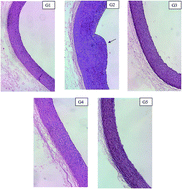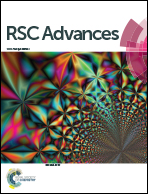Phytochemical investigation, hypocholesterolemic and anti-atherosclerotic effects of Amaranthus viridis leaf extract in hypercholesterolemia-induced rabbits
Abstract
Hypercholesterolemia is one of the main causes for coronary heart disease, which occurs due to high levels of serum cholesterol. Oxidized LDL accumulation leads to atherosclerotic plaque formation, which contributes to myocardial infarction and cardiovascular diseases. Consumption of statins leads to adverse health effects such as liver and muscle toxicity; thus attention is now focused on alternative treatments using chemicals of plant origin. This study is designed to investigate the phytochemical components, hypocholesterolemic and antiatherosclerotic effects of Amaranthus viridis (A. viridis) using hypercholesterolemic rabbits. Gas Chromatography Mass Spectrometry (GC-MS/MS) analysis revealed 30 compounds, while Reverse Phase-High Performance Liquid Chromatography (RP-HPLC) detected the presence of ascorbic acid, rutin, quercetin and catechin. An animal model study was performed on twenty New Zealand white rabbits that were randomly divided into 5 groups and fed with normal diet, 2% high cholesterol diet (HCD), 2% HCD + 10 mg kg−1 simvastatin, 2% HCD + 100 mg kg−1 A. viridis extract and 2% HCD + 200 mg kg−1 A. viridis extract, respectively. The supplementation with A. viridis extract significantly reduced total cholesterol, LDL and triglyceride levels, and increased the levels of HDL and antioxidant enzymes (SOD and GPx). The elevated levels of AST, ALT and creatine kinase indicate liver and muscle injuries. Treatment with A. viridis extract also diminished the development of aortic plaques and decreased the intima : media ratio, as observed in simvastatin-treated rabbits. The phytocomponents of A. viridis have been reported to have therapeutic effects in treating hypercholesterolemia and atherosclerosis, and the in vivo study on A. viridis further confirms its potential as an alternative therapeutic agent.


 Please wait while we load your content...
Please wait while we load your content...